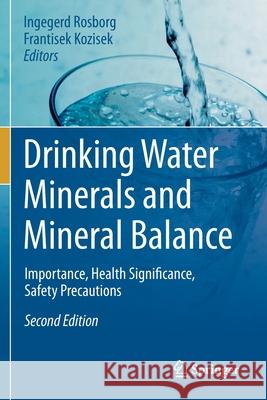Drinking Water Minerals and Mineral Balance: Importance, Health Significance, Safety Precautions » książka
topmenu
Drinking Water Minerals and Mineral Balance: Importance, Health Significance, Safety Precautions
ISBN-13: 9783030180362 / Angielski / Miękka / 2021 / 175 str.
Drinking Water Minerals and Mineral Balance: Importance, Health Significance, Safety Precautions
ISBN-13: 9783030180362 / Angielski / Miękka / 2021 / 175 str.
cena 645,58
(netto: 614,84 VAT: 5%)
Najniższa cena z 30 dni: 616,85
(netto: 614,84 VAT: 5%)
Najniższa cena z 30 dni: 616,85
Termin realizacji zamówienia:
ok. 22 dni roboczych
Dostawa w 2026 r.
ok. 22 dni roboczych
Dostawa w 2026 r.
Darmowa dostawa!
Kategorie BISAC:
Wydawca:
Springer
Język:
Angielski
ISBN-13:
9783030180362
Rok wydania:
2021
Wydanie:
2019
Ilość stron:
175
Waga:
0.27 kg
Wymiary:
23.39 x 15.6 x 1.04
Oprawa:
Miękka
Wolumenów:
01
Dodatkowe informacje:
Wydanie ilustrowane











